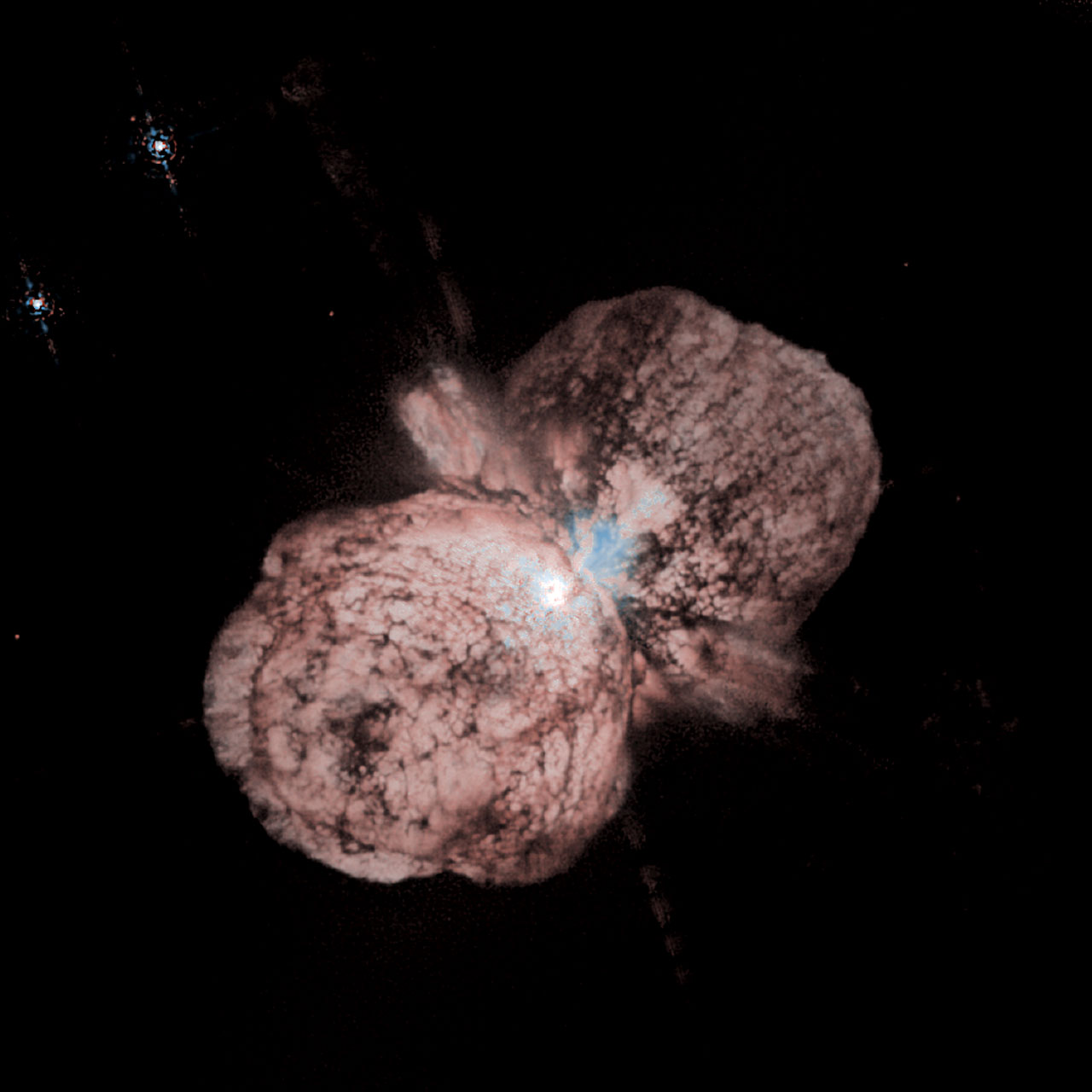Death of a Star

Eventually, as previously stated, stars must run out of hydrogen. When
this happens at the core, the star attempts to
adjust by fusing new materials; starting with helium. This is replaced
with carbon, and then neon, oxygen, and even
silicon. The end result is a shell-like structure, each region fusing
new elements.
But this cannot continue forever. Once the element of iron is reached,
the process breaks down once more. For a
star like the sun, this results in the outer layers being shed away and
the star shrinking to an object about the size
of the Earth, a white dwarf. Larger stars have more complicated
processes.
In all such stars, all lighter elements are continuously fused into
iron until eventually the sphere is so large it cannot
support its own mass. It collapses catastrophically, pushing most of
its mass outward in an immense shockwave,
as pictured to the right. This is where things split, yet again. When
the collapsed region is less than four solar masses,
a neutron star will be born.
More horrifically, when the mass is still larger, a black hole is born.

